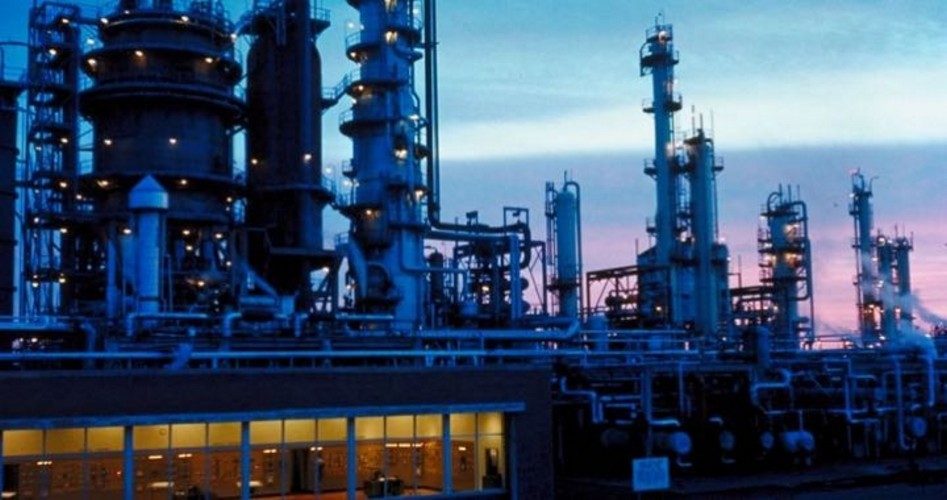
With the price of crude oil for March delivery falling below $60 a barrel last week on the New York Mercantile Exchange (NYMEX), half of OPEC’s worst nightmare is taking place: Higher oil prices sought by the cartel are bringing on American production at a faster rate than ever before. The other half of the nightmare would be a slowdown in global demand for the stuff.
A sell-off was triggered by an announcement last week from the Energy Information Agency (EIA) that U.S. crude oil production exceeded 10 million barrels per day (bpd) last month — the first time since 1970 — and would continue to set records into 2018. In addition, U.S. oil rig count jumped by 26, the largest jump in a year.
Helping along was the overbought position by traders expecting crude oil prices to move even higher. It’s estimated that those traders owned a billion barrels of oil through futures and options contracts, and when oil began to tip over, many rushed to unload them, accelerating the decline.
Also adding to the downward pressure was the little-noticed part of the budget bill passed late last week that mandated cutting the United States’ Strategic Petroleum Reserve (SPR) by 100 million barrels. That would raise about $6 billion for the U.S. Treasury at today’s prices, and although not scheduled for immediate sale, it’s more pressure to the downside.
Along with that is the restarting of the North Sea crude oil pipeline that was taken offline unexpectedly, affecting more than a third of its crude oil production.
Analysts at Commerzbank put two and two together and cogently concluded that crude oil prices had nowhere to go but down:
It is now clear that oil prices in late January [Brent briefly traded above $70 a barrel] were too high to keep the oil market balanced in the long term. This is because U.S. production is now rising so sharply that there is a risk of renewed oversupply if OPEC does not voluntarily renounce [give back] market share.
Thanks to U.S. production, crude oil inventories are climbing once again, rising by nearly two million barrels during the week ending February 2.
Traders are not only selling off their leveraged bullish positions but have cut their expectations for future deliveries, as well. On January 26, NYMEX crude closed at $66.14 on January 26 but closed on Friday, February 9 at $59.05, a drop of more than 10 percent. That coincided with the beginning of the stock market sell-off, which added to the drop. Traders are now placing bets that oil will be priced at $55 a barrel by the end of the year.
There are other pieces and parts to the global energy equation as well, including Big Oil’s expansion of its efforts in the Bakken Formation in North Dakota and the Permian Basin in Texas. ExxonMobil announced it would be taking some of its tax savings under tax reform and pumping (sorry!) it into its Permian Basin properties. Two other of oil’s “big sisters” — Royal Dutch Shell and Conoco — are pouring capital into Canada’s Montney and Durvernay Formations, which hold proven reserves in the billions of barrels.
There is another uncounted event that could add more downward pressure on oil prices: the cataclysmic disaster unfolding in Venezuela. Sitting atop one of the world’s largest fields of proven reserves, the Marxist destroying the country’s economy has about reached the end of his financial tether. Nicolas Maduro is losing airspeed and altitude at a satisfyingly alarming rate, and it is easy to see why some political prognosticators see his departure, perhaps with extreme prejudice, long before the end of the year.
Maduro’s state-owned oil company, PdVSA, has had production cuts from over three million bpd to half that amount, pushing the country into default on its $150 billion of outstanding debt. Once removed from power, it is likely (hoped?) that the new regime will refurbish the company and bring back online the production that Maduro has destroyed.
Put all together then, the outlook for oil and gas prices remains positive from a consumer’s point of view. The New American is on record as predicting that gasoline prices will be down nicely from their current level just in time for summer vacations and families taking automobile and RV trips during the school breaks. It’s also on record as predicting the ever decreasing influence of the OPEC cartel along the way.
Photo: Clipart.com
An Ivy League graduate and former investment advisor, Bob is a regular contributor to The New American magazine and blogs frequently at LightFromTheRight.com, primarily on economics and politics. He can be reached at [email protected].
Related article:
Fracking Revolution Pushes U.S. Daily Crude Oil Production Over 10 Million Barrels



